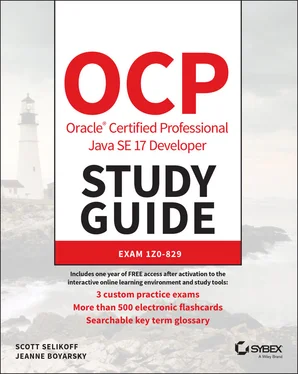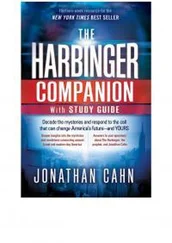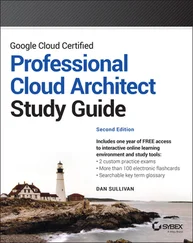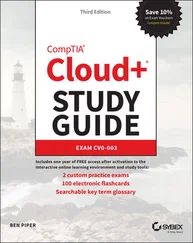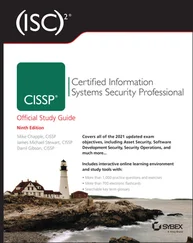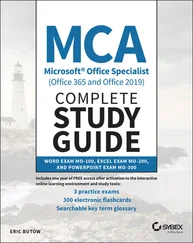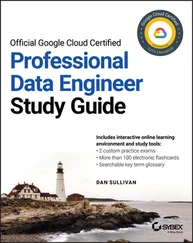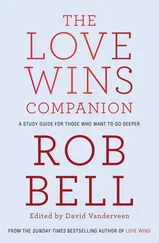1 Cover
2 Title Page OCP Oracle ® Certified Professional Java SE 17 Developer Study Guide Exam 1Z0-829 Scott Selikoff Jeanne Boyarsky
3 Copyright
4 Dedication
5 Acknowledgments
6 About the Authors
7 About the Technical Editor About the Technical Proofreader
8 Introduction Understanding the Exam Reading This Book Studying for the Exam Applying Test-Taking Strategies Taking the Exam Objective Map Assessment Test
9 Chapter 1: Building Blocks Learning about the Environment Understanding the Class Structure Writing a main() Method Understanding Package Declarations and Imports Creating Objects Understanding Data Types Declaring Variables Initializing Variables Managing Variable Scope Destroying Objects Summary Exam Essentials Review Questions
10 Chapter 2: Operators Understanding Java Operators Applying Unary Operators Working with Binary Arithmetic Operators Assigning Values Comparing Values Making Decisions with the Ternary Operator Summary Exam Essentials Review Questions
11 Chapter 3: Making Decisions Creating Decision-Making Statements Applying switch Statements Writing while Loops Constructing for Loops Controlling Flow with Branching Summary Exam Essentials Review Questions
12 Chapter 4: Core APIs Creating and Manipulating Strings Using the StringBuilder Class Understanding Equality Understanding Arrays Calculating with Math APIs Working with Dates and Times Summary Exam Essentials Review Questions
13 Chapter 5: Methods Designing Methods Declaring Local and Instance Variables Working with Varargs Applying Access Modifiers Accessing static Data Passing Data among Methods Overloading Methods Summary Exam Essentials Review Questions
14 Chapter 6: Class Design Understanding Inheritance Creating Classes Declaring Constructors Initializing Objects Inheriting Members Creating Abstract Classes Creating Immutable Objects Summary Exam Essentials Review Questions
15 Chapter 7: Beyond Classes Implementing Interfaces Working with Enums Sealing Classes Encapsulating Data with Records Creating Nested Classes Understanding Polymorphism Summary Exam Essentials Review Questions
16 Chapter 8: Lambdas and Functional Interfaces Writing Simple Lambdas Coding Functional Interfaces Using Method References Working with Built-in Functional Interfaces Working with Variables in Lambdas Summary Exam Essentials Review Questions
17 Chapter 9: Collections and Generics Using Common Collection APIs Using the List Interface Using the Set Interface Using the Queue and Deque Interfaces Using the Map Interface Comparing Collection Types Sorting Data Working with Generics Summary Exam Essentials Review Questions
18 Chapter 10: Streams Returning an Optional Using Streams Working with Primitive Streams Working with Advanced Stream Pipeline Concepts Summary Exam Essentials Review Questions
19 Chapter 11: Exceptions and Localization Understanding Exceptions Recognizing Exception Classes Handling Exceptions Automating Resource Management Formatting Values Supporting Internationalization and Localization Loading Properties with Resource Bundles Summary Exam Essentials Review Questions
20 Chapter 12: Modules Introducing Modules Creating and Running a Modular Program Updating Our Example for Multiple Modules Diving into the Module Declaration Creating a Service Discovering Modules Comparing Types of Modules Migrating an Application Summary Exam Essentials Review Questions
21 Chapter 13: Concurrency Introducing Threads Creating Threads with the Concurrency API Writing Thread-Safe Code Using Concurrent Collections Identifying Threading Problems Working with Parallel Streams Summary Exam Essentials Review Questions
22 Chapter 14: I/O Referencing Files and Directories Operating on File and Path Introducing I/O Streams Reading and Writing Files Serializing Data Interacting with Users Working with Advanced APIs Review of Key APIs Summary Exam Essentials Review Questions
23 Chapter 15: JDBC Introducing Relational Databases and SQL Introducing the Interfaces of JDBC Connecting to a Database Working with a PreparedStatement Getting Data from a ResultSet Calling a CallableStatement Controlling Data with Transactions Closing Database Resources Summary Exam Essentials Review Questions
24 Appendix: Answers to the Review Questions Chapter 1: Building Blocks Chapter 2: Operators Chapter 3: Making Decisions Chapter 4: Core APIs Chapter 5: Methods Chapter 6: Class Design Chapter 7: Beyond Classes Chapter 8: Lambdas and Functional Interfaces Chapter 9: Collections and Generics Chapter 10: Streams Chapter 11: Exceptions and Localization Chapter 12: Modules Chapter 13: Concurrency Chapter 14: I/O Chapter 15: JDBC
25 Index
26 End User License Agreement
1 Introduction TABLE I.1 Exam information
2 Chapter 1 TABLE 1.1 Setup procedure by operating system TABLE 1.2 Important javacoptions TABLE 1.3 Important javaoptions TABLE 1.4 Important jaroptions TABLE 1.5 Order for declaring a class TABLE 1.6 Primitive types TABLE 1.7 Wrapper classes TABLE 1.8 Text block formatting TABLE 1.9 Reserved words TABLE 1.10 Tracking scope by block
3 Chapter 2 TABLE 2.1 Order of operator precedence TABLE 2.2 Unary operators TABLE 2.3 Increment and decrement operators TABLE 2.4 Binary arithmetic operators TABLE 2.5 Simple assignment operator TABLE 2.6 Compound assignment operators TABLE 2.7 Equality operators TABLE 2.8 Relational operators TABLE 2.9 Logical operators TABLE 2.10 Conditional operators
4 Chapter 3 TABLE 3.1 Control statement usage
5 Chapter 4TABLE 4.1 Rules for indent()and stripIndent()TABLE 4.2 Common formatting symbolsTABLE 4.3 Binary search rulesTABLE 4.4 Arrays.compare()examplesTABLE 4.5 Equality vs. comparison vs. mismatchTABLE 4.6 Methods in LocalDate, LocalTime, LocalDateTime, and ZonedDateTime...TABLE 4.7 Where to use Durationand Period
6 Chapter 5TABLE 5.1 Parts of a method declaration in Figure 5.1TABLE 5.2 Optional specifiers for methodsTABLE 5.3 Optional specifiers for instance variablesTABLE 5.4 A method in ______ can access a ______ member.TABLE 5.5 Static vs. instance callsTABLE 5.6 The order that Java uses to choose the right overloaded method
7 Chapter 6TABLE 6.1 Class modifiers
8 Chapter 7TABLE 7.1 Interface member typesTABLE 7.2 Interface member accessTABLE 7.3 Usage of the permitsclause in sealed classesTABLE 7.4 Modifiers in nested classesTABLE 7.5 Nested class access rules
9 Chapter 8TABLE 8.1 Valid lambdas that return a booleanTABLE 8.2 Invalid lambdas that should return a booleanTABLE 8.3 Method referencesTABLE 8.4 Common functional interfacesTABLE 8.5 Convenience methodsTABLE 8.6 Common functional interfaces for primitivesTABLE 8.7 Primitive-specific functional interfacesTABLE 8.8 Rules for accessing a variable from a lambda body inside a method...
10 Chapter 9TABLE 9.1 Factory methods to create a ListTABLE 9.2 ListmethodsTABLE 9.3 QueuemethodsTABLE 9.4 DequemethodsTABLE 9.5 Using a Dequeas a stackTABLE 9.6 MapmethodsTABLE 9.7 Behavior of the merge()methodTABLE 9.8 Java Collections Framework typesTABLE 9.9 Collection attributesTABLE 9.10 Comparison of Comparableand ComparatorTABLE 9.11 Helper static methods for building a ComparatorTABLE 9.12 Helper default methods for building a ComparatorTABLE 9.13 Types of boundsTABLE 9.14 Why we need a lower bound
Читать дальше
